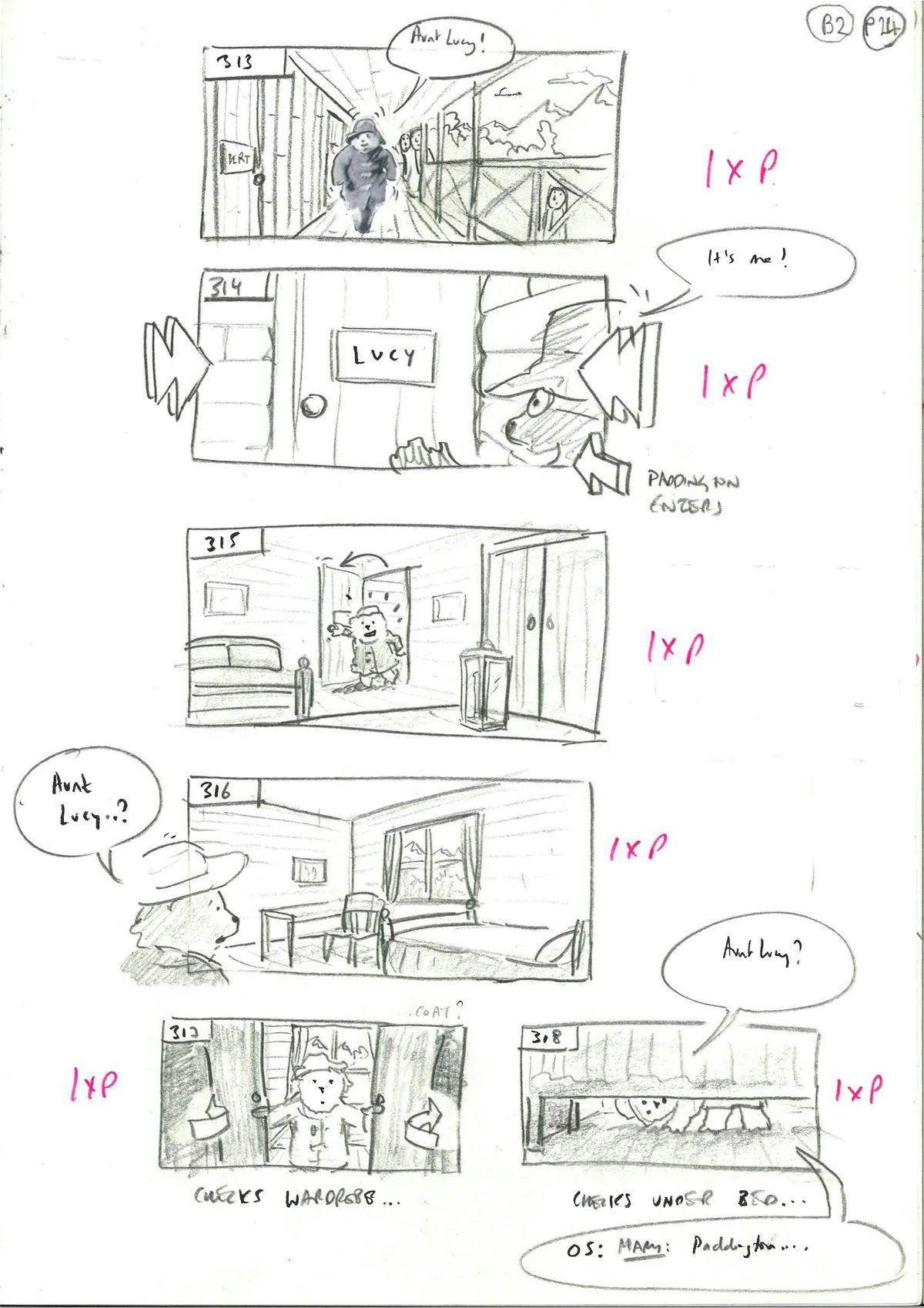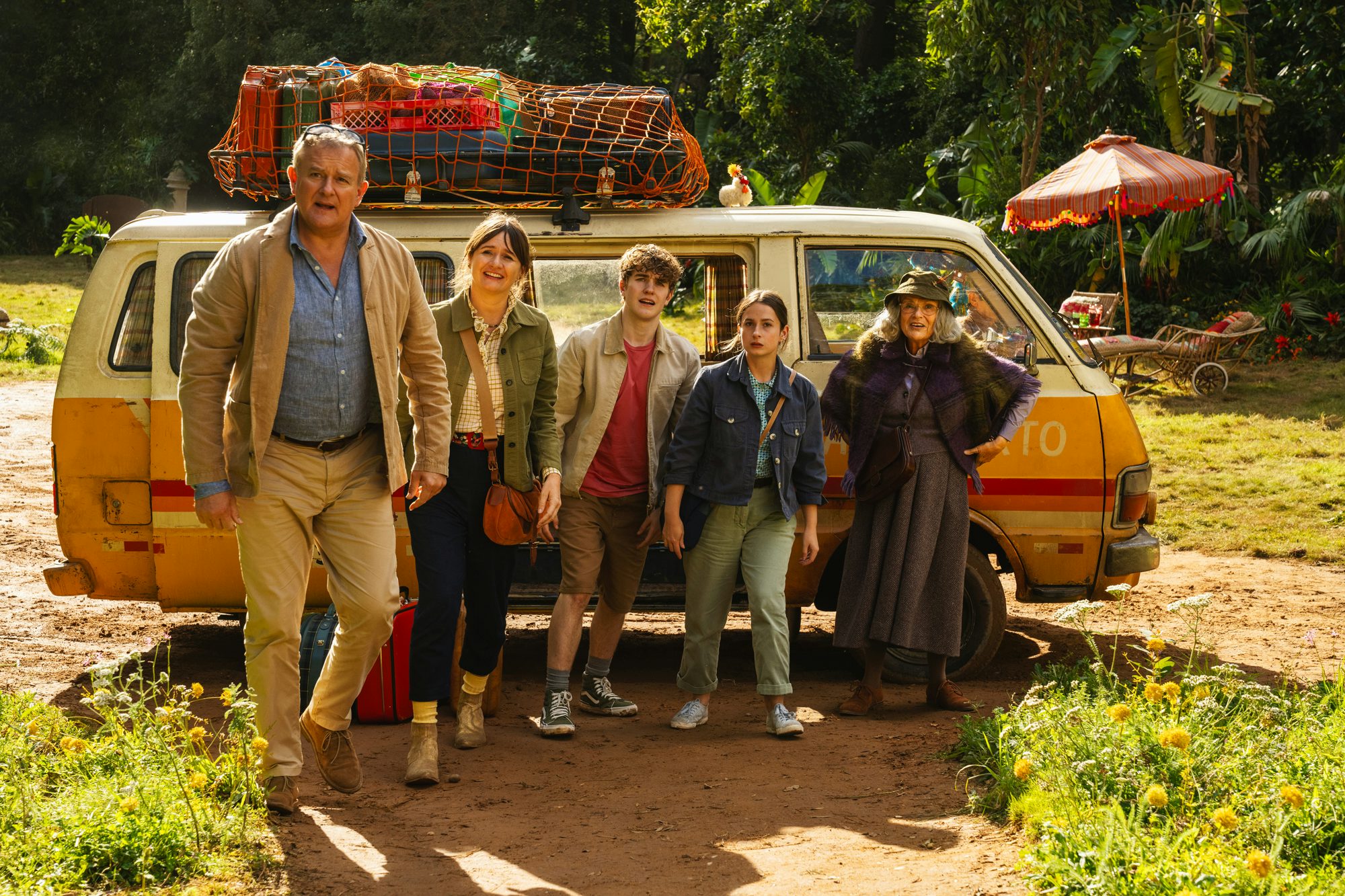The Monthly Interview: Dougal Wilson
Having made his mark on the world of music videos and ads, the director is moving into features with the latest Paddington film. Here, he discusses taking on the mantle of Britain’s most beloved bear and why he’ll always have an affinity with short form
There was a moment while shooting Paddington in Peru where it dawned on Dougal Wilson that he was witnessing two of Britain’s most famous living actresses, Julie Walters and Olivia Colman, on screen together for the first time in history. “I remember thinking, ‘I’m sure I shouldn’t be the one telling them what to do here’. Not that they needed telling what to do!” he laughs.
While Wilson admits that he’s still dealing with the sense of imposter syndrome he felt right from the moment he was asked to take the reins from Paul King (who co-wrote and directed the original Paddington film in 2014 and its 2017 sequel), for those who are familiar with the director’s work in music videos and commercials his move into features seems like the logical next step. For starters, he’s one of the most awarded directors in commercial filmmaking, having picked up major gongs at D&AD, Cannes Lions and countless other awards over the course of his career.
There’s also a cinematic quality to much of the director’s previous work, which deftly weaves together humour, raw emotion and a touch of surrealism. In Temper Trap’s Love Lost music video from 2010, for instance, he sought out beauty and drama in the story of a group of schoolkids on a cross-country run. His Channel 4 campaign marking the Rio Paralympics in 2016 was a defiant celebration of difference. And his 2013 commercial for Three, which starred a Shetland pony dancing to Fleetwood Mac, was a rare example of an ad campaign that became a genuine viral hit.
Arguably though, it was Wilson’s career-making work on the John Lewis Christmas ads in the 2010s which put him in the running for the Paddington director job. Aside from some of the more technical feats, such as getting a heartwarming performance out of an array of CGI creatures, he believes the simplicity of the idea at the heart of those ads helped prepare him for the requirements of storytelling on a cinematic scale. “I remember them all very well and very affectionately because they were great fun to do, and they all had really good ideas,” he says.
As one of the most iconic children’s characters of all time, it’s not surprising to hear that the director was already a fan of Michael Bond’s original Paddington Bear books. He’s also a big admirer of King’s work on both Paddington and Paddington 2, which he notes was rated even higher than Citizen Kane on Rotten Tomatoes at one point. “The way Paul brought in people from his comedy background, like Richard Ayoade, Simon Farnaby and people from the Mighty Boosh, I thought that was just so clever and it really coined the tone. It was terrifying because I was following in the footsteps of two pretty amazing films, and the third one in any series is challenging.”

While the first film in the trilogy sees Paddington looking for a home and finding it in London, and the second film explores his new community in more depth, when Wilson first got the call about Paddington in Peru in 2020 he was tasked with bringing the story back to the bear’s home country. When Paddington receives a letter from the Reverend Mother – Olivia Colman’s blithe guitar strumming nun who runs the Home for Retired Bears – with news that his Aunt Lucy misses him dearly, he knows he must visit her as soon as possible. Joined by the Browns and the ever-resourceful Mrs Bird on an Indiana Jones-style adventure, along the way they also meet some new friends, including Antonio Banderas’ dashing riverboat captain Hunter Cabot.
An obsession with prep has been omnipresent in Wilson’s practice ever since a traumatic early career experience shooting a music video for Electric Soft Parade, the premise of which was that someone with a metal detector would gradually discover the band on a beach. “When we tried to bury people under the sand and get all the coverage in one day on a beach, it was so behind schedule,” he recalls. “I remember thinking, no one’s going to employ me again, this is all going so wrong. And that fear instilled this obsession with not taking anything for granted.”
I think the shorter form is great and can be just as cinematic. They’re both the execution of ideas, and if the idea is good, the length is immaterial
Working on his first feature-length film, he quickly realised that bringing his usual style of preparation was going to be pretty much impossible. “Normally I like to draw storyboards myself, just because it really acquaints me with what’s going on,” says the director. “It’s amazing when you try and draw something, it really stays in your head, but that was just going to be unrealistic. I thumbnailed a lot of stuff, and when I say thumbnail, I mean illegible little boxes with scribbles in. Then we had a team of three storyboarders working away and we got through all the scenes.”
There were, however, some comforting parallels that he noticed between the sequence meetings required for each scene in the film and a more conventional pre-production meeting for commercials, minus the client. “Everyone was around the table, including the grips, the lighting department, hair and makeup, costume, so that was a great way to do things because you really felt prepared when you went on the shoot.”

One of the biggest challenges Wilson faced was how to bring the vivid world of Peru to life on-screen. While the original idea was to take the entire production over there, when they worked out the budget they realised that was wildly unrealistic. Instead, the director spent several months out in Peru and Colombia looking at locations and shooting as much as possible. Back in the UK, production designer Andrew Kelly and the VFX team then seamlessly blended practical and digital elements to create the rest of the settings.
“I went back with all my photos … and then we sort of pieced it together and started storyboarding, working out what was going to be shot in Elstree Studios, or some of it was in Hertfordshire on a farm that we built sets on,” he says. “It was great fun to look at the mechanics of it, but when I was eventually at the studios and saw all these sets we were building, it really started to dawn on me that a little whimsical idea you have during a brainstorm can have some pretty profound ramifications. So you have to be careful what you come up with and make sure it’s worth building.”

As for Paddington himself, the director describes his performance as a herculean team effort from Ben Whishaw, who has voiced him for all three films now, VFX house Framestore, director of animation Pablo Grillo, and physical comedian Javier Marzan. “There was a bunch of techniques involved and then sometimes it was just drawings but it would all feed in. Eventually it would go away to this mysterious area in the building I didn’t know anything about, it would come back and there would be this wonderful, animated bear.”
Alongside the humour we’ve come to know and love the Paddington films for, Wilson also had to grapple with more profound themes of home, identity and belonging – no mean feat in what is ultimately a kid’s film. “I am probably more at home in the moments where it’s not supposed to be taken quite so seriously,” he admits. “But inevitably Paddington has to have a heart and a message that goes a little deeper, and that came out in the script and the wonderful performances. It might seem a bit dry and serious on the page, but when you hear [Ben] performing it and you then have Dario Marianelli’s music, suddenly it all just comes together.”
Asked whether he’s proud of how his first film’s turned out, Wilson admits: “I still have no idea what to make of it myself. I’ve seen it an unhealthy number of times, and it’s impossible to be objective.” As for what’s next for the director, while he’d love to get the chance to do another feature in the future, he’s by no means ruled out a return to making more ads and music videos. “I’m very much available!” he laughs. “It took so long to develop [Paddington]. From getting into it seriously to actually standing on set and filming something took a while, and I wouldn’t want to leave it that long before I was on a film shoot again.
“And I really enjoy short form stuff,” he adds. “Commercials, if they’ve got good ideas, are great fun, as are music videos. I haven’t done a music video for ages though, but that’s what got me into this in the first place. I think the shorter form is great and can be just as cinematic. They’re both the execution of ideas, and if the idea is good, the length is immaterial.”
Paddington in Peru is in UK cinemas from November 8; @dougalwilson




